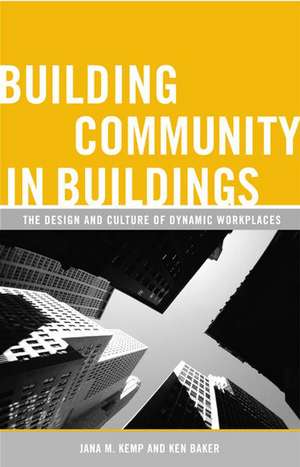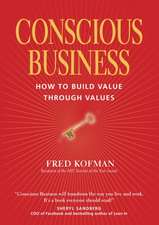Building Community in Buildings: The Design and Culture of Dynamic Workplaces
Autor Ken Baker, Jana M. Kempen Limba Engleză Hardback – 29 noi 2006 – vârsta până la 17 ani
Preț: 321.54 lei
Nou
Puncte Express: 482
Preț estimativ în valută:
61.53€ • 65.79$ • 51.30£
61.53€ • 65.79$ • 51.30£
Carte tipărită la comandă
Livrare economică 18 aprilie-02 mai
Preluare comenzi: 021 569.72.76
Specificații
ISBN-13: 9780275992200
ISBN-10: 0275992209
Pagini: 224
Dimensiuni: 156 x 235 x 22 mm
Greutate: 0.5 kg
Editura: Bloomsbury Publishing
Colecția Praeger
Locul publicării:New York, United States
ISBN-10: 0275992209
Pagini: 224
Dimensiuni: 156 x 235 x 22 mm
Greutate: 0.5 kg
Editura: Bloomsbury Publishing
Colecția Praeger
Locul publicării:New York, United States
Notă biografică
Jana M. Kemp, founder and owner of Meeting & Management Essentials, is a management trainer, facilitator, and speaker, specializing in improving individual and organizational productivity and performance, and working with clients in the private, public, and nonprofit sectors. In 2004 she was elected to the Idaho House of Representatives. Recipient of several small business ownership awards, and a regular commentator in newspapers, radio, and television, she is the author of Moving Meetings and No! How One Simple Word Can Transform Your Life.Ken Baker is owner of K energy Consulting, a Boise-based research and consulting company that works with communities, building owners, and building design teams to develop environmentally sustainable and human responsive buildings. In 1982 he opened a residential design and construction business, Integrated Living Designs, specializing in energy and environmentally efficient housing design, and from 1985 to 2000 he worked for the State of Idaho Energy Division as a building energy specialist.
Recenzii
For Kemp and Baker, the value of workplace community is to be found in the way people work well together, communicate effectively in crisis, feel creative and productive, and feel secure enough to make connections with other people. Their description of how to achieve these goals brings together questions of architecture and human working behavior and addresses a wide range of issues, including energy and light usage, building travel patterns, organizational design and community interaction, design elements that encourage spontaneous and informal interactions, and the interaction of building design with work productivity variables (health, safety and security, comfort and control, community, rewards, and creativity and morale).















